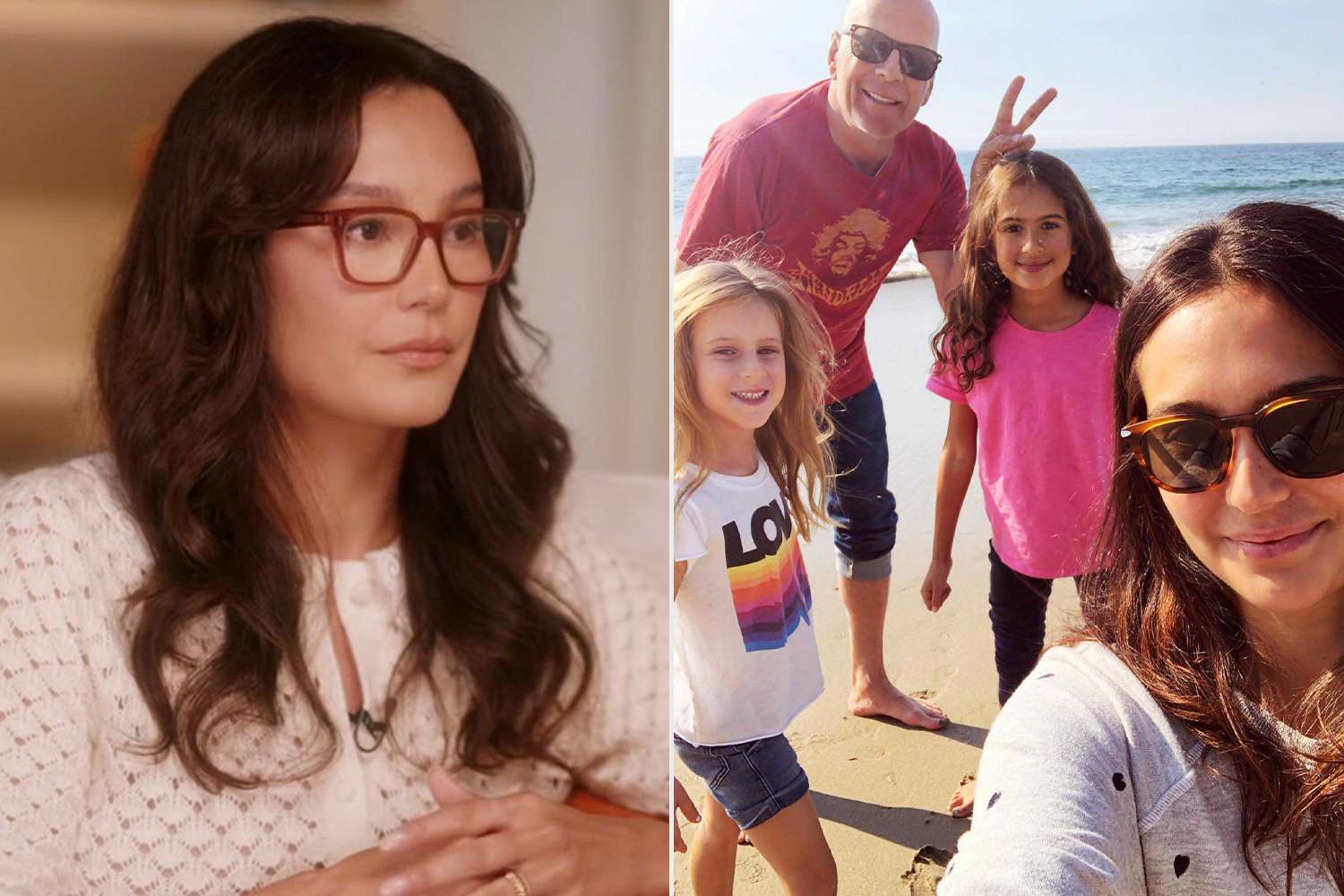
Hollywood icon Bruce Willis, known for his legendary roles in Die Hard, Pulp Fiction, and The Sixth Sense, is now navigating one of the most challenging chapters of his life. Diagnosed with frontotemporal dementia (FTD), a progressive neurological condition that affects behavior, personality, and language, Willis has moved into a separate residence tailored to his care needs. The decision, made by his wife Emma Heming Willis, reflects a deeply personal and compassionate approach to caregiving—one that prioritizes both Bruce’s well-being and the emotional stability of their family.
A Difficult Diagnosis
Bruce Willis’s health journey began publicly in 2022 when his family announced he had been diagnosed with aphasia, a condition that impairs communication. Less than a year later, the diagnosis evolved into frontotemporal dementia, a more severe form of cognitive decline that affects the frontal and temporal lobes of the brain. These areas are responsible for speech, emotional regulation, and social behavior.
FTD is known for its unpredictable progression and can lead to significant changes in personality, motor skills, and language comprehension. For someone like Willis—once celebrated for his quick wit and commanding screen presence—the diagnosis has been a profound shift. His family, especially Emma Heming, has been candid about the emotional toll and the adjustments required to support him.
The Decision to Live Separately
In a recent interview, Emma Heming Willis revealed that Bruce now resides in a separate home designed specifically for his care. The residence is a one-story building equipped for 24-hour support, ensuring safety, comfort, and ease of navigation. This decision, she explained, was one of the hardest she’s ever had to make—but also one of the most necessary.
“I knew, first and foremost, Bruce would want that for our daughters,” Emma said, referring to their two children, Mabel Ray (13) and Evelyn Penn (11). “He would want them to be in a home that was more tailored to their needs, not his.”
The separation is not a sign of emotional distance but rather a strategic move to create two environments: one optimized for Bruce’s medical needs and another for the children’s growth and emotional well-being. Emma emphasized that the family remains closely connected, with frequent visits and shared meals. “We’re there a lot,” she said. “It’s our second home, so the girls have their things there.”
Creating a Safe and Loving Space
The new residence is more than just a medical facility—it’s a home filled with warmth, laughter, and love. Friends and family visit regularly, bringing joy and familiarity to Bruce’s daily routine. Emma described the space as “safe, quiet, and easier to navigate,” noting that it has become a sanctuary where Bruce can live with dignity and comfort.
Noise and overstimulation can agitate individuals with FTD, so Emma had previously begun limiting social activities at their primary home. Playdates and sleepovers were paused, and the family’s social circle was narrowed to reduce stress. “I isolated our whole family, and that was by design,” she said. “That was a hard time.”
By creating a separate living arrangement, Emma has been able to restore balance—allowing her daughters to enjoy a more typical childhood while ensuring Bruce receives the specialized care he needs.
The Emotional Toll of Caregiving
Emma Heming Willis has emerged as a powerful voice in the caregiving community, openly sharing her experiences and challenges. She has spoken about the emotional strain of watching her husband’s personality change, the sleepless nights spent monitoring his safety, and the heartbreak of losing the man she once knew to a disease that slowly erodes identity.
“The language is going,” she said. “We’ve learned to adapt. We have a way of communicating with him, which is just a different way.”
Despite the difficulties, Emma remains steadfast in her role—not just as a caregiver, but as a mother, advocate, and partner. Her transparency has helped raise awareness about FTD and the realities of long-term care, offering support to countless families facing similar struggles.
Maintaining Family Bonds
Though Bruce and Emma now live in separate homes, their bond remains strong. The family’s routine includes daily visits, shared meals, and moments of connection that transcend words. Emma described Bruce as “still very mobile” and “in great health overall,” emphasizing that while his brain is failing him, his spirit remains intact.
The separation has also allowed Bruce’s adult daughters—Rumer, Scout, and Tallulah, from his previous marriage to Demi Moore—to visit more freely. The blended family continues to rally around him, offering love, companionship, and continuity.
Emma’s decision reflects a nuanced understanding of caregiving: that proximity is not the only measure of love, and that sometimes, physical space can create emotional clarity and healing.
A Broader Conversation on Dementia Care
Bruce Willis’s story has sparked a broader conversation about dementia care, especially for public figures whose lives are often scrutinized. The decision to live separately challenges traditional notions of caregiving and highlights the importance of individualized care plans.
Frontotemporal dementia is a rare and complex condition, often misdiagnosed or misunderstood. By sharing their journey, the Willis family is helping to destigmatize cognitive decline and advocate for compassionate, informed care.
Emma has also authored a book titled The Unexpected Journey: Finding Strength, Hope and Yourself on the Caregiving Path, aimed at supporting other caregivers. Her insights offer practical advice and emotional validation for those navigating similar paths.
Looking Ahead
As Bruce Willis continues his journey with dementia, his family remains committed to preserving his dignity, comfort, and connection. The separate living arrangement is not a retreat but a recalibration—an act of love that honors both his needs and those of his children.
Emma’s strength, transparency, and devotion have turned a private struggle into a public lesson in empathy. Through her choices, she reminds us that caregiving is not just about proximity—it’s about presence, intention, and the courage to do what’s best, even when it’s hard.
Bruce Willis may no longer be the action hero leaping from skyscrapers, but in this chapter of his life, he is surrounded by a different kind of strength: the quiet resilience of a family that chooses love, even when it means letting go of old routines. In the face of a disease that takes so much, they’ve found a way to give more—more care, more compassion, and more grace.


Leave a Reply